Affiliate links on Android Authority may earn us a commission. Learn more.
Google Pixel 2 XL vs OnePlus 5T
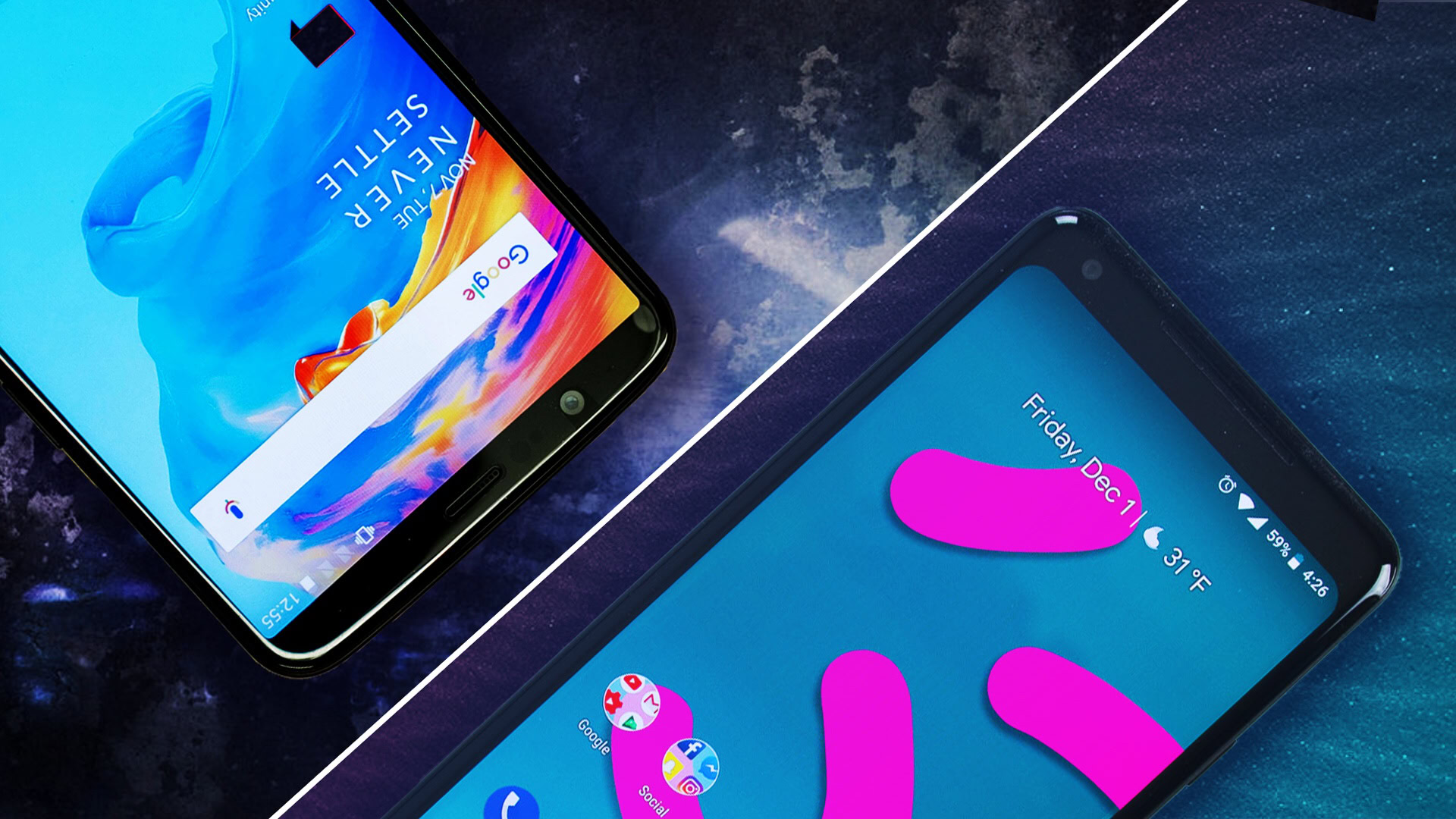
OnePlus has always offered flagship smartphone experiences at way lower prices than the competition. But as the company packs in more features and better specifications, the price its devices has slowly risen.
2017’s OnePlus 5T adopts many of the major trends in the smartphone world to better compete with the flagship competition, but how does it fair against the best from Google? Find out in our Google Pixel 2 XL vs OnePlus 5T comparison.
Design
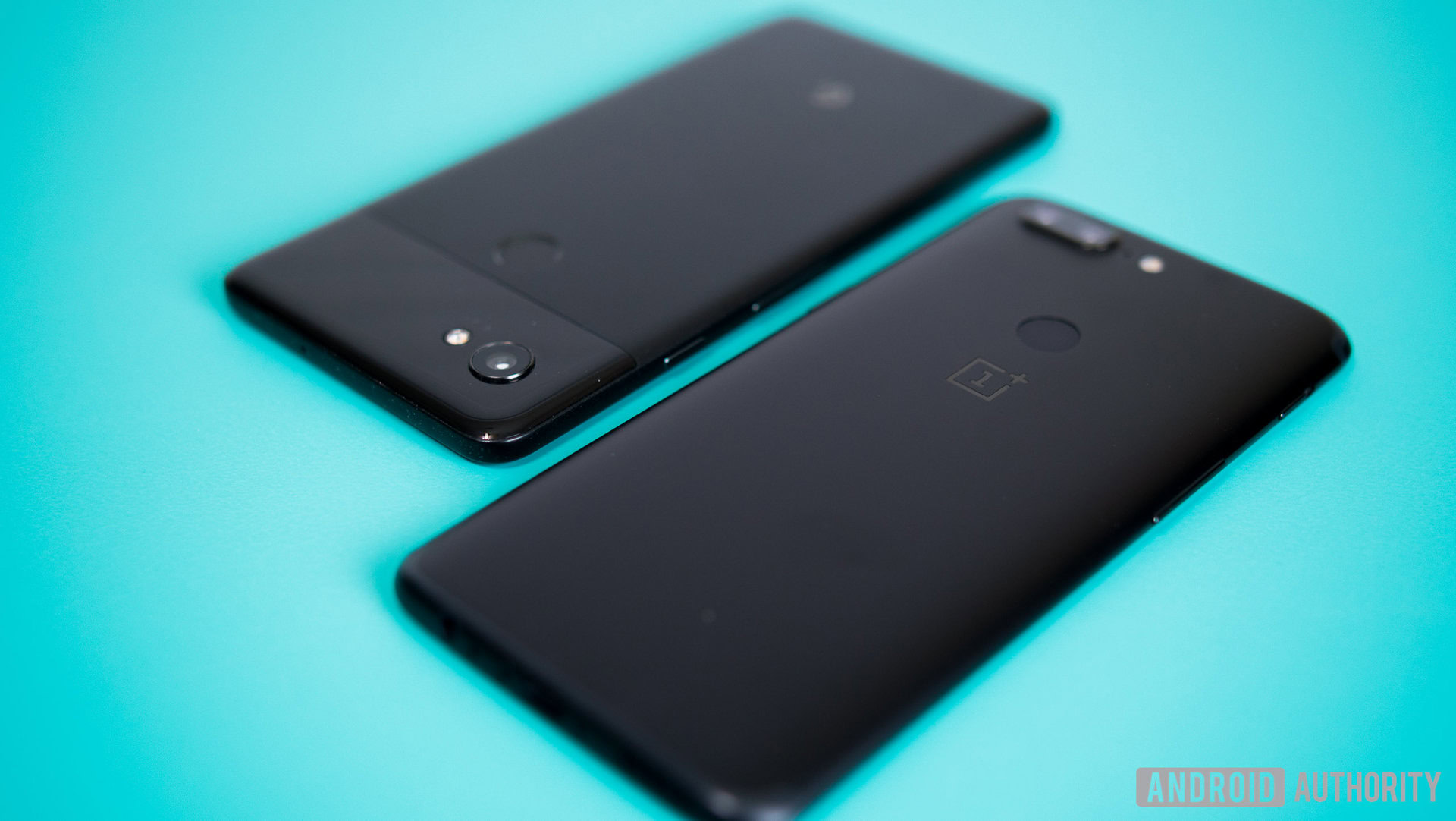
On the outside, the Pixel 2 XL and OnePlus 5T share the same build materials, with metal chassis, but look and feel completely different.
Don’t miss: Google Pixel 2 and Pixel 2 XL review | OnePlus 5T review
The Pixel 2 XL has rounded corners and slight curves. Its flat sides and back makes it feel more blocky than the 5T’s curvy, pebble-like design. This also makes it feel much thicker in the hand — after all, the Pixel is both taller and wider. If you’re concerned about one-handed usability, the 5T takes the cake, as it’s body is not much larger than the display itself.
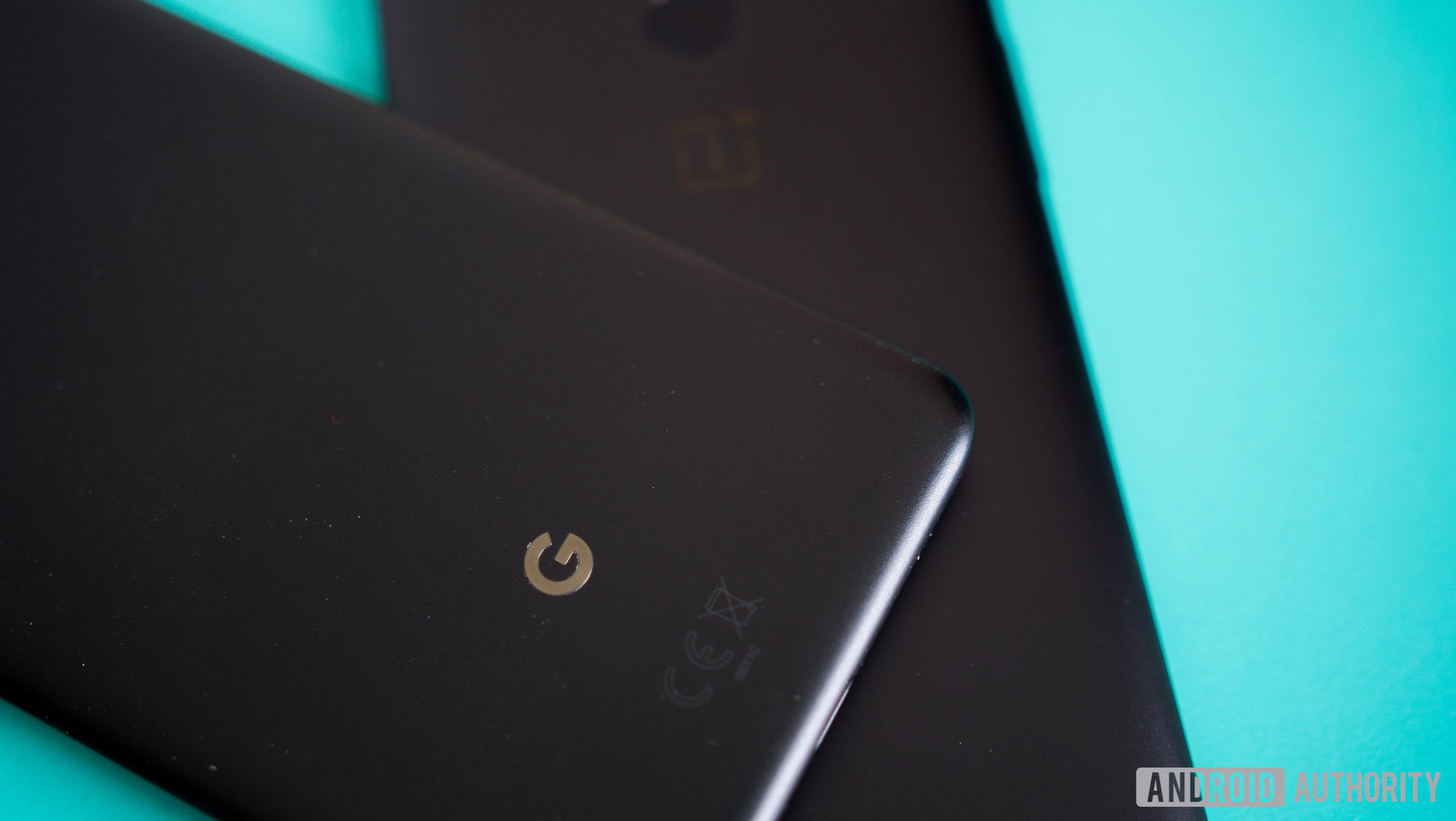
The rear glass panel of last year’s Pixel makes a return on the Pixel 2 XL, establishing the Pixel line’s distinguishable design characteristic. It’s got a two-tone look that not everyone will like, and it’s a much more industrial design which doesn’t try to be overly fancy. The Pixel 2 XL also features a textured coating over its metal body, which resists fingerprints and provides more grip over the smooth and slippery finish of the OnePlus 5T. However, due to the heavy use of curves and the tapered backside, the 5T is not only sleeker in appearance but also more comfortable to hold. Build quality is not an issue on either one, but the OnePlus 5T feels every bit as high quality despite its much lower price.
The Pixel 2 XL's camera bump is significantly smaller than the OnePlus 5T's.
On the back, both devices feature a camera bump, but the Pixel 2 XL’s isn’t significant enough to affect the phone’s ability to lie flat on a table. The 5T’s camera bump is much more prominent. It not only prevents the phone from lying perfectly flat on a surface, but also means it will wobble if you like to type on your phone while it’s laying on a table or desk.
Display
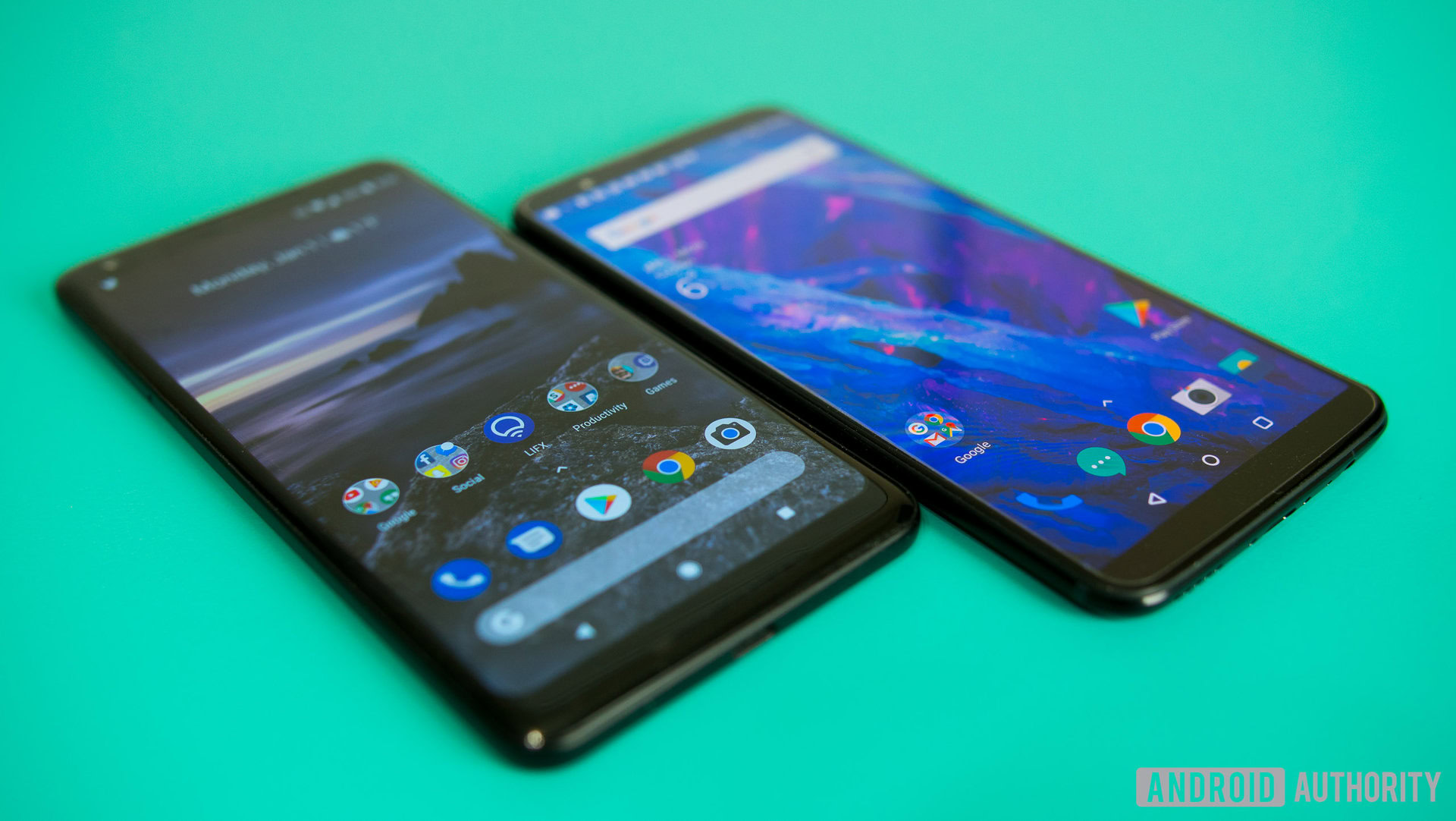
Small bezels and 18:9 screens became all the rage in 2017, and Google and OnePlus were no exception to that trend. The OnePlus 5T pulls the look off better than the Pixel 2 XL, as its bezels are much smaller. The Pixel 2 XL’s are very thick in comparison. Both the Pixel 2 XL and OnePlus 5T feature 6-inch AMOLED screens, but the Pixel 2 XL’s is higher resolution at Quad HD+ while OnePlus is sticking with a Full HD+ panel with the 5T.
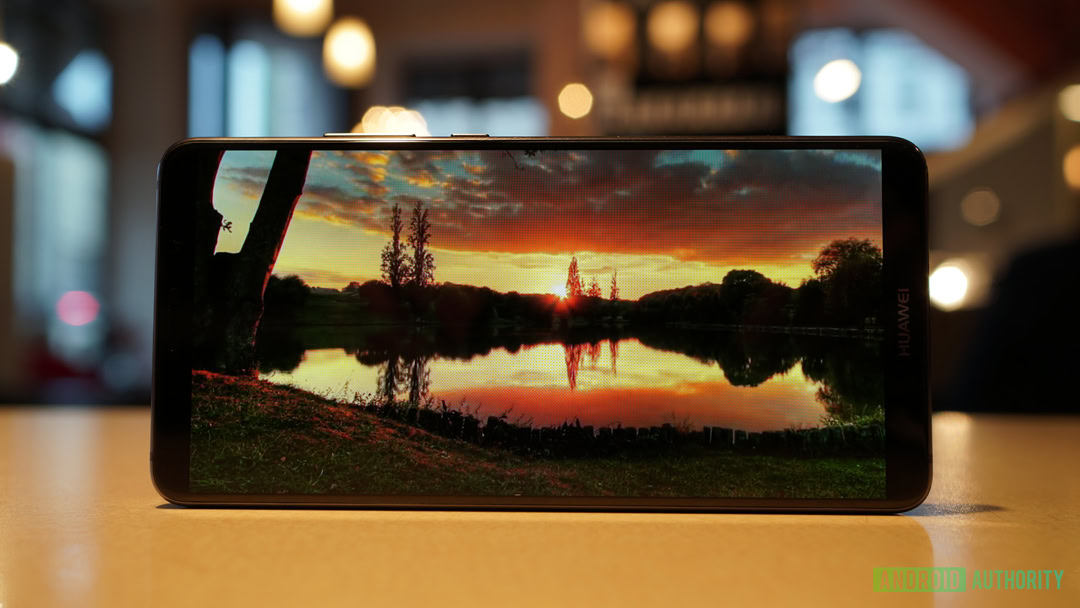
The Pixel 2 XL is far sharper, but there’s more to a screen’s quality than just its resolution. The 5T features one of the best 1080p panels on the market. Unless you’re pixel peeping, you may not notice much difference. The screen is also incredibly contrasted and vibrant, with fantastic viewing angles and brightness, making it very appealing to the eyes.
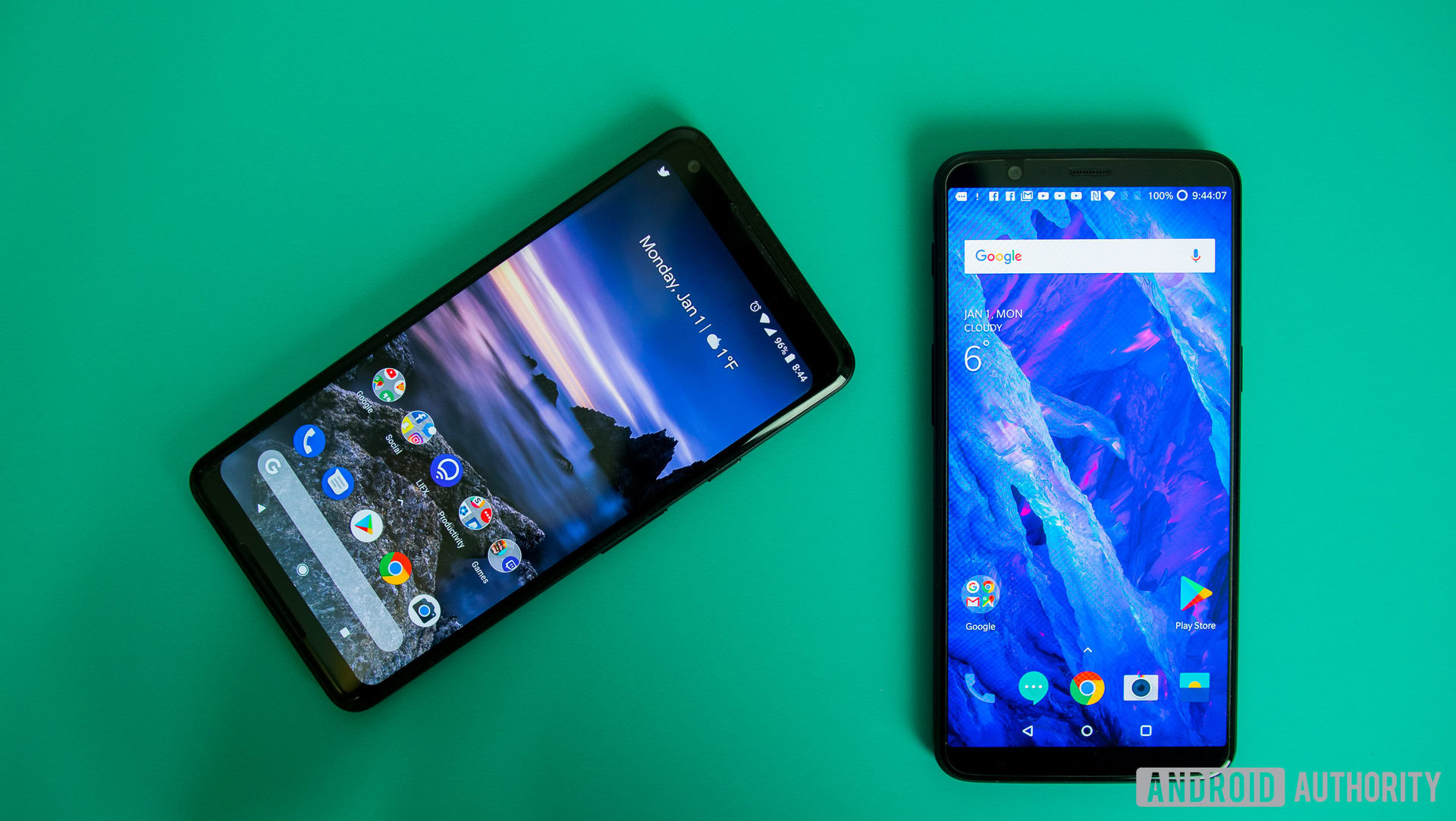
The Pixel 2 XL’s display is no slouch either, but it has been the subject of controversy regarding numerous issues like touch response, a blue color shift during off-axis viewing, and dull, muted colors. The blue color shift was no where near as problematic as it was made out to be. Ever since Google issued a software update to add in a “saturated” mode, the screen looks much better. It’s nowhere near as vibrant as the 5T’s display, but it’s still very pleasant to look at and the update made the display what it should have been from the get go.
Performance
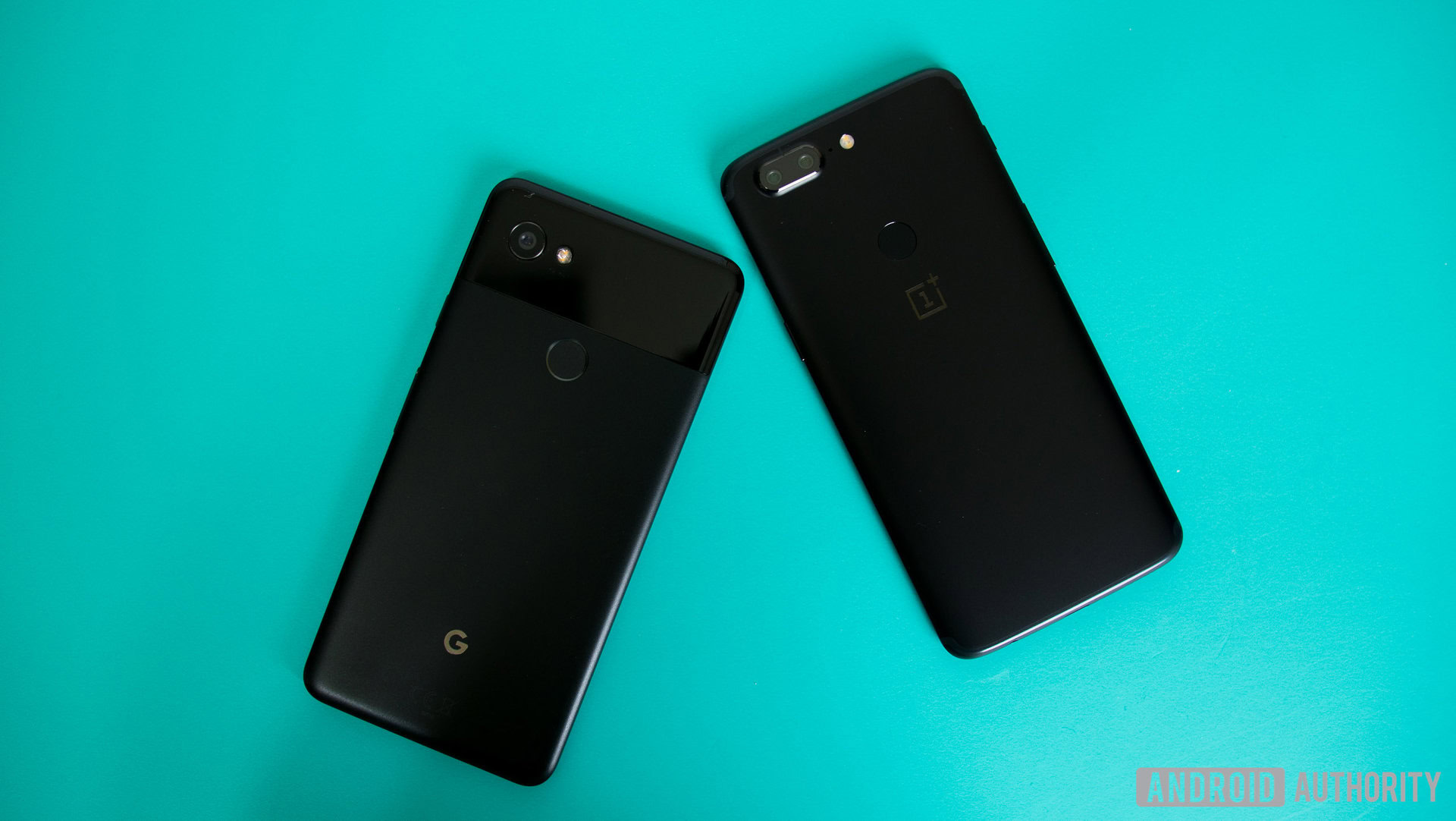
At this point in the year, talking about specifications is like beating a dead horse. But just in case you’ve forgotten, the Pixel 2 XL and OnePlus 5T both pack the Qualcomm Snapdragon 835 and come in either 64 or 128 gigabytes of storage. There’s unfortunately no option for microSD expansion on either phone, but for most people these storage options should be plenty. The only difference here is in the RAM department— the Pixel 2 XL ships with 4 GB of RAM while the OnePlus 5T ups the ante with 6 or 8 GB of RAM.
The Pixel 2 Xl and OnePlus 5T are two of the best performers out there.
As expected, both devices are incredibly snappy. I never noticed any slow down using either one. The abundance of RAM on the 5T is especially nice for multitasking purposes, but it doesn’t make the 5T feel any faster than the Pixel 2 XL fir every day tasks like launching applications, moving through the interface, web browsing, watching videos, or playing games. The Pixel 2 XL and 5T perform extremely well even under heavy loads. Much of the Pixel 2 XL and 5T’s fast performance can also be attributed to the lightweight nature of vanilla Android and OxygenOS, which Google and OnePlus have done great jobs optimizing. When it comes to sheer performance, these two are very tough to beat.
Hardware
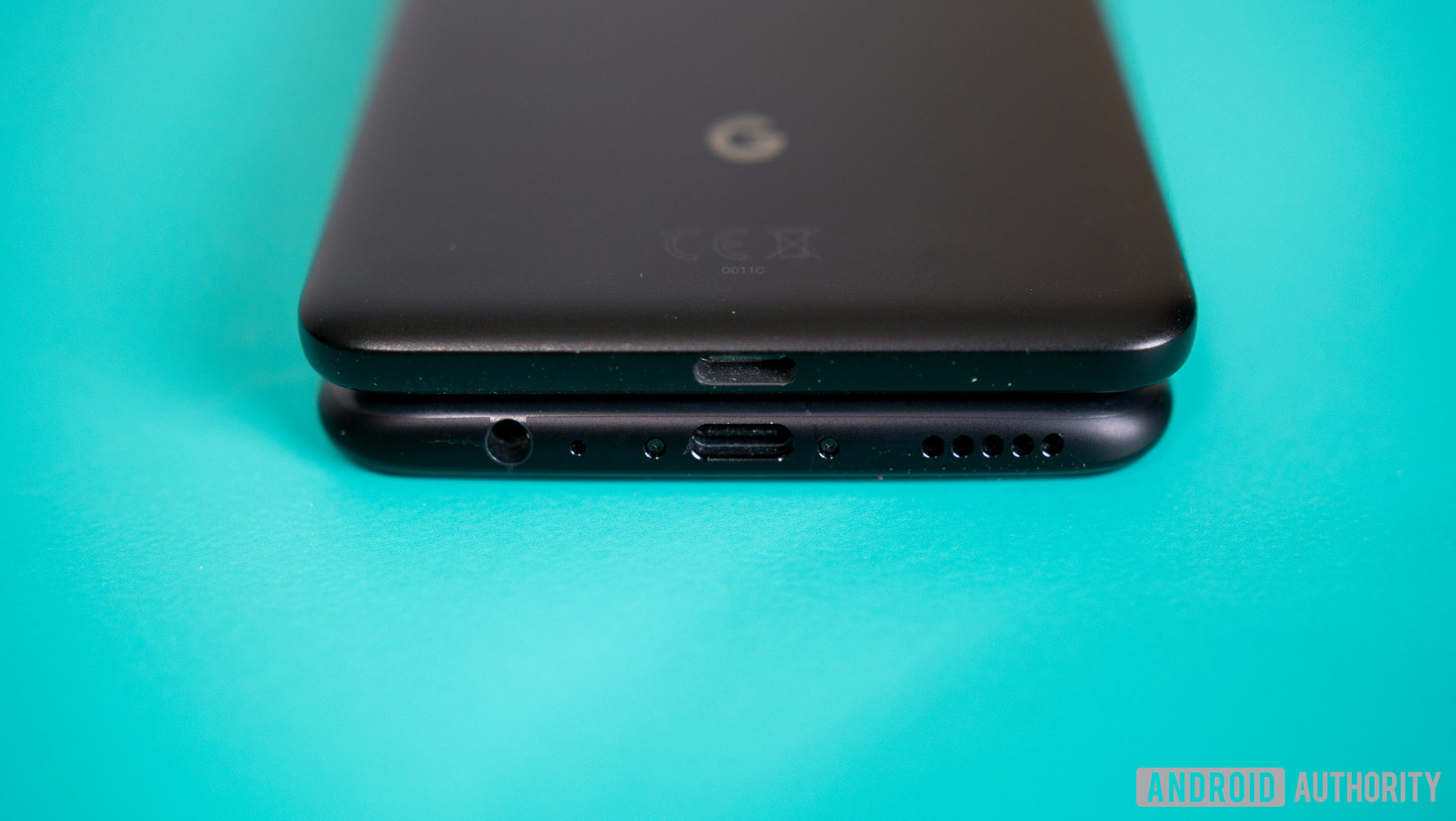
The 5T kept its headphone jack, but the Pixel 2 XL ditched it this year despite being thick enough to house one. Google was nice enough to include a 3.5 mm adapter to USB Type-C adapter in the box, which you’ll probably want to keep attached to your favorite earbuds or over-the-ear cans.
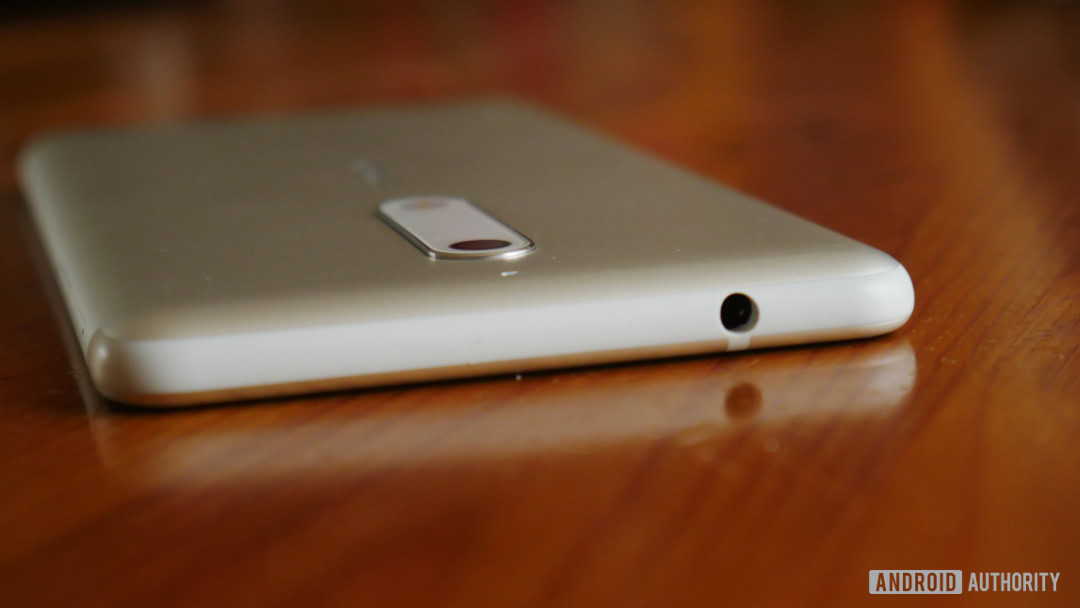
One feature that Google brought back is front-facing stereo speakers, which helps justify the Pixel 2 Xl’s thicker bezels. They’re loud and crisp with excellent clarity, and the OnePlus 5T’s single bottom-firing speaker just can’t compare despite being one of the better single speakers we’ve seen on a smartphone.
The Pixel 2 XL has an IP67 certification that provides protection for up to one meter of water resistance for 30 minutes. The 5T does not carry any sort of ingress protection so you’ll have to be more careful around water.
Both devices come with rear mounted fingerprint sensors, which I prefer. It’s comfortable and easy to reach with an index finger. They’re both extremely fast and accurate at unlocking, but the 5T feels slightly quicker due to it’s lack of a wake animation.

An area where both the Pixel 2 XL and OnePlus 5T shine is in battery life. A 3,520 mAh battery can be found in the Pixel 2 XL and a 3,300 mAh cell powers the 5T. In our testing, each phone is capable of lasting all day and can easily hit the six hours of screen on time mark. This results from a combination of things like Google’s battery life optimizations for Android, AMOLED screens, and the 1080p resolution on the 5T’s display, which is less taxing.
There’s no wireless charging on either device due to the metal exterior, but Quick Charge 3.0 is available on the Pixel 2 XL, and the OnePlus 5T supports OnePlus’ proprietary Dash Charging technology. Dash Charging is much faster and more efficient in heat regulation and can maintain those fast charging speeds even while the phone is in use.
Cameras

Dual cameras is another hot trend with smartphones right now, but Google believes it doesn’t need to resort to two sensors in order to deliver a great camera experience. On paper, the OnePlus 5T looks to have the superior camera, but as we all know, camera quality isn’t determined purely by raw specs. The Pixel 2 XL has a 12.2 megapixel rear shooter that’s equipped with OIS, EIS, and an aperture of f/1.8.
The 5T has a dual-camera setup just like its predecessor, but no longer do you get 1.6x optical zoom from the second sensor. The cameras still retain the same megapixel count with 16 for the main sensor and 20 for the secondary, but this time around the 20 megapixel sensor is designed to improve low light performance. You can still perform a quick 2X zoom within the camera app, but it’s purely digital, meaning it’s a cropped image of the original sensor.
OnePlus 5T camera samples
Portrait mode for that fancy background blur is available on both smartphones but their means of achieving this DSLR-like bokeh is quite different. Each have their respective pros and cons. Because the Pixel 2 XL only has one sensor, it utilizes machine learning to separate the subject from the background. This makes portrait possible on the rear- and front-facing cameras, which can give your selfies a more dramatic or professional look, which isn’t possible on the 5T as portrait is only available on the rear camera. What I like about portrait mode on the Pixel 2 XL is that it provides you with two copies of each image. One with blur and one without. This makes it easy to gauge how much the bokeh actually adds to the image, and it’s always nice to have the image without bokeh just in case you prefer it. However, portrait mode on the Pixel 2 XL has a crop factor, meaning your shots have a more zoomed-in look. The OnePlus 5T gives you the entire frame of the image to work with.
Pixel 2 XL camera samples
The bokeh effect isn’t perfect on either camera, and depending on the complexity of the image you will get photos where the blur bleeds onto the subject. I prefer the Pixel 2 XL’s portrait mode overall, as the bokeh has a creamier look to it and is more convincing than the OnePlus 5T.
In regular lighting situations, both cameras are capable of producing very pleasant looking images although the Pixel 2 XL truly shines when it comes to contrast, sharpness, and overall dynamic range. I also prefer the color reproduction of the Pixel 2’s images, as they are much more natural than the 5T. In certain situations this can work in OnePlus’ favor, but sometimes its higher saturation can feel a little aggressive.
Low light, or night time, shots are where the Pixel 2 XL really pulls ahead of the 5T. Photos from the Pixel 2 XL are brighter, with more detail in the shadows, cleaner highlights, and you can see a significant difference in detail and sharpness when zooming in. The 20 megapixel secondary sensor on the 5T was design to improve low light doesn’t seem to be helping as much as OnePlus might have hoped.
Software
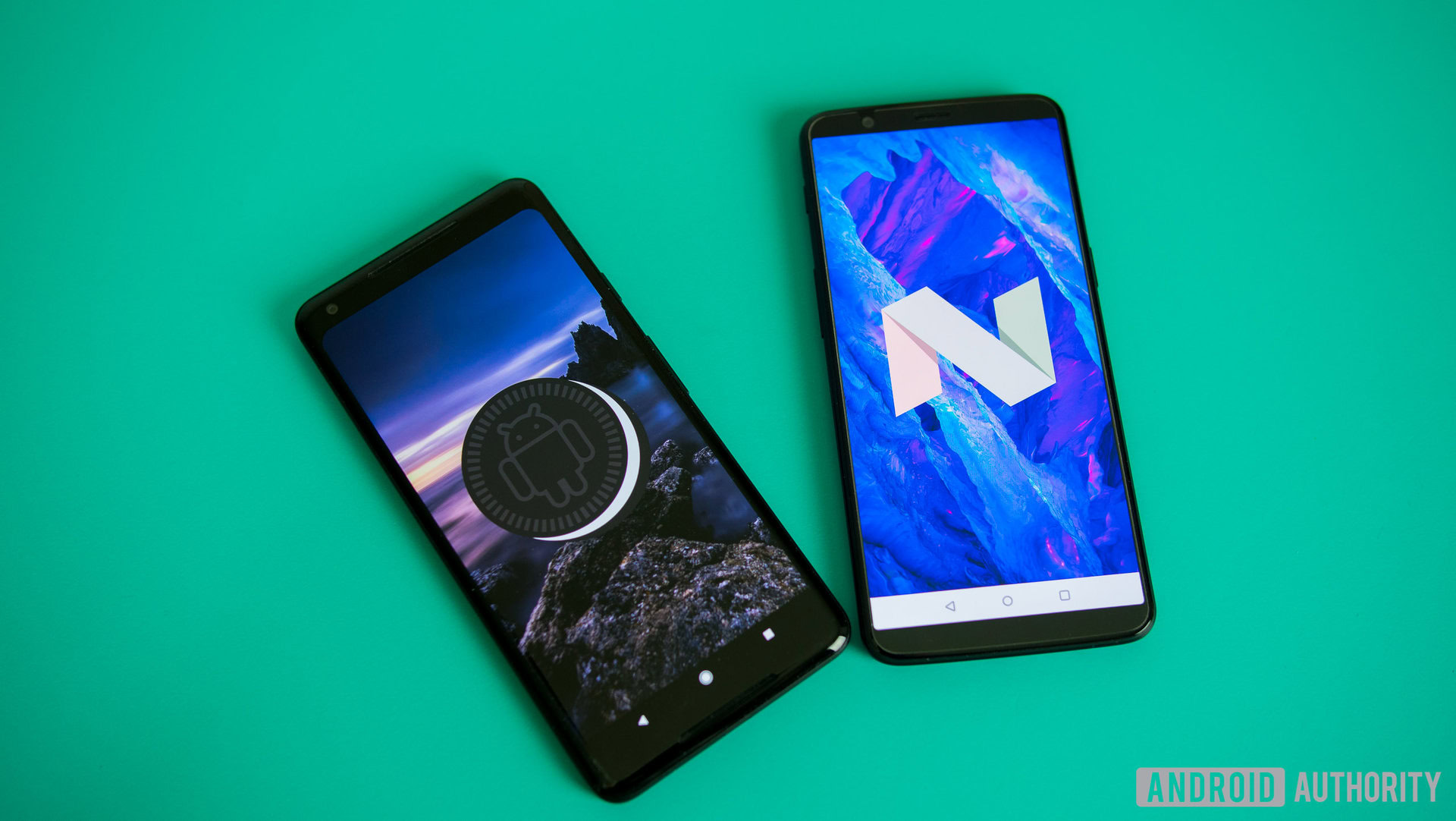
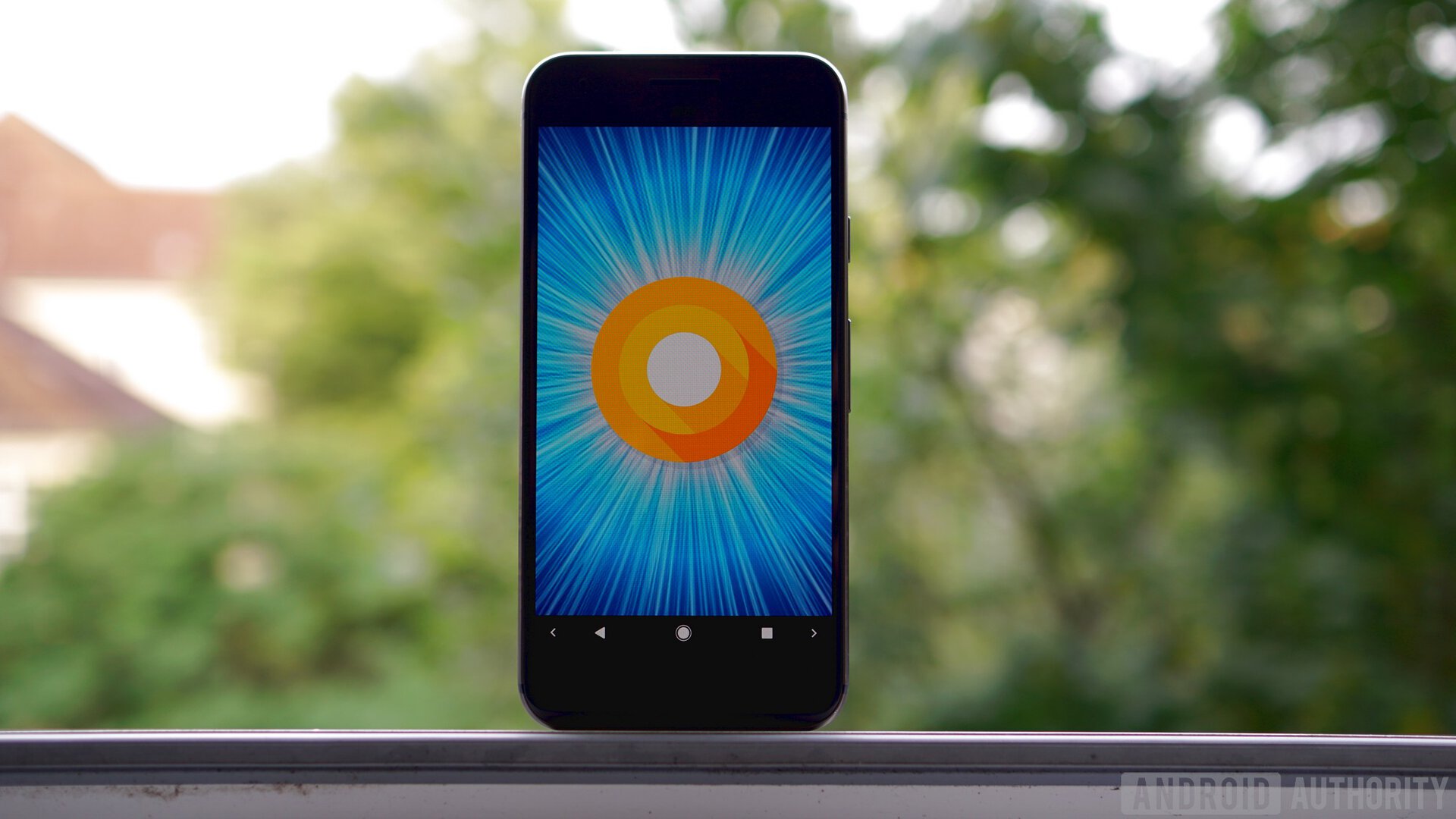
When it comes to software, you really can’t go wrong with either device. The advantage with the Pixel 2 XL is that you’re getting the latest version of Android with 8.1 Oreo. It’s 100% stock, and updates are always a speedy process as they come directly from Google. Android Oreo is a pleasure to use on the Pixel 2 XL. It’s the most refined version of Android yet and small touches like the new fluid animations, notification dots, picture-in-picture support, and the Now Playing feature on the lock screen really make Oreo a fantastic experience.

OxygenOS on the OnePlus 5T is truly a breath of fresh air (no pun intended). It’s currently based on Android 7.1.1 Nougat, but is expected to see Oreo in Q1 of 2018. What I like most about OxygenOS is that the experience feels very close to pure Android but includes a ton of great features and customization options for you to personalize the OS to your heart’s content. The dark theme not only looks beautiful on the AMOLED screen but also helps save battery life. I love that you can pick from a variety of different accent colors too. The status bar can be heavily tweaked with different battery icon styles and you can pick and choose which icons you want to show or hide to keep things less cluttered.
This version of OxygenOS comes with some new tricks, like the face unlock feature, which isn’t quite as secure as the fingerprint sensor, but it works well and is surprisingly very fast. You can now run two instances of the same app which OnePlus is calling Parallel Apps. This feature isn’t necessarily unique to OnePlus, but it’s great for apps that don’t have multiple user login support and it’s nice to see this feature popping up on more smartphones.
Conclusion
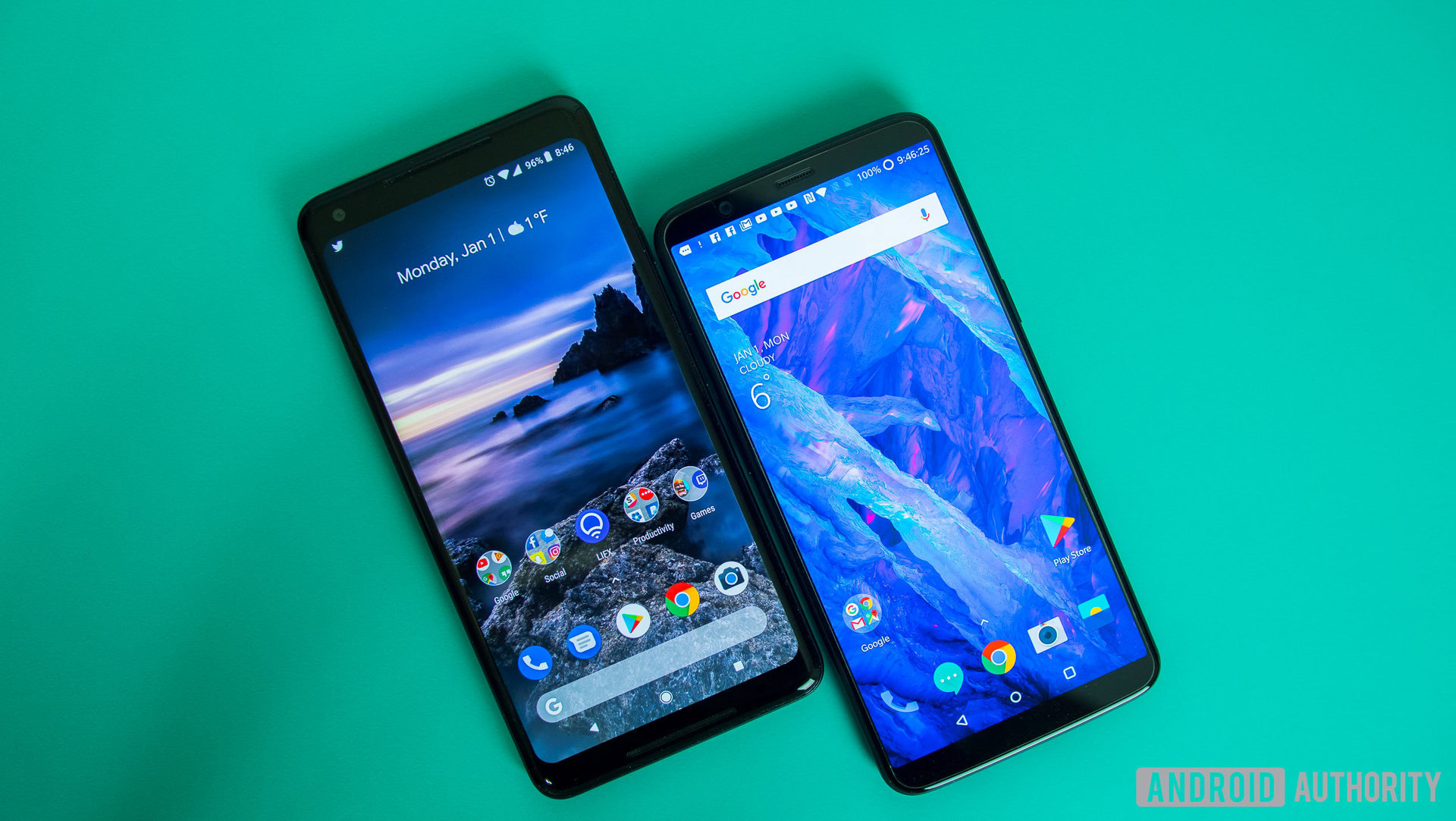
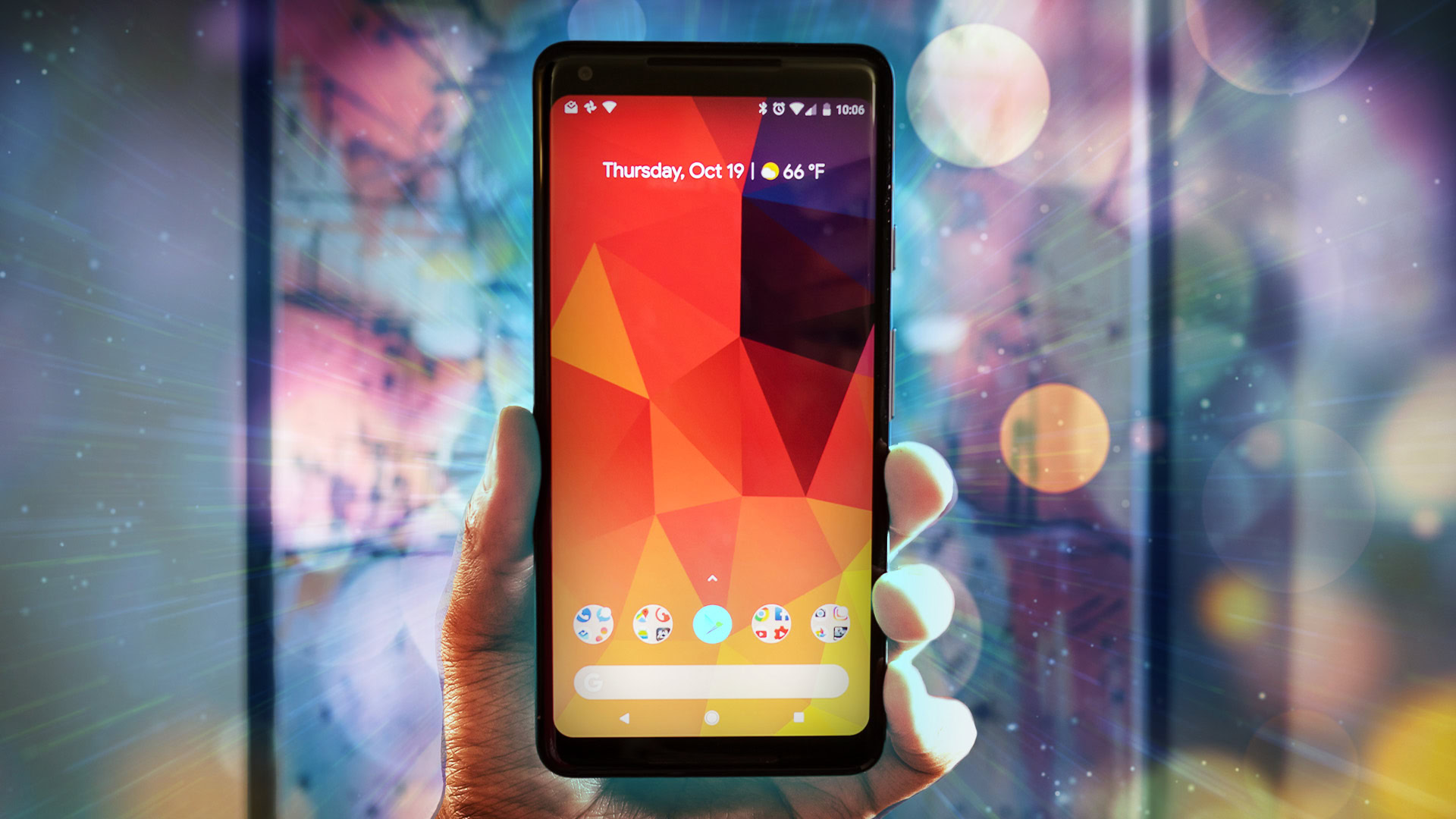
The price difference between these two phones will be a huge factor in which one you decide to purchase. The starting $499.99 price tag of the OnePlus 5T is very appealing. Despite OnePlus devices’ rising cost over the years, they still bring amazing value. With the metal build, dual cameras, 18:9 display, and a blazing fast fingerprint reader, you’re getting an incredible smartphone which is up to date with the current trends and could easily be worth more. It’s a very similar experience to the Pixel 2 XL, without the high cost.
Taking pricing out of the equation the Pixel 2 XL is my winner for few of reasons: the camera is significantly better, especially in low light, it’s IP67 certified, and it will always be up to date with the latest software. To me, that makes the extra cost of the Pixel 2 XL worth every penny.
If money wasn’t an option, which would you choose? Let us know in the comments.
Read more: Google Phones – what options are there?